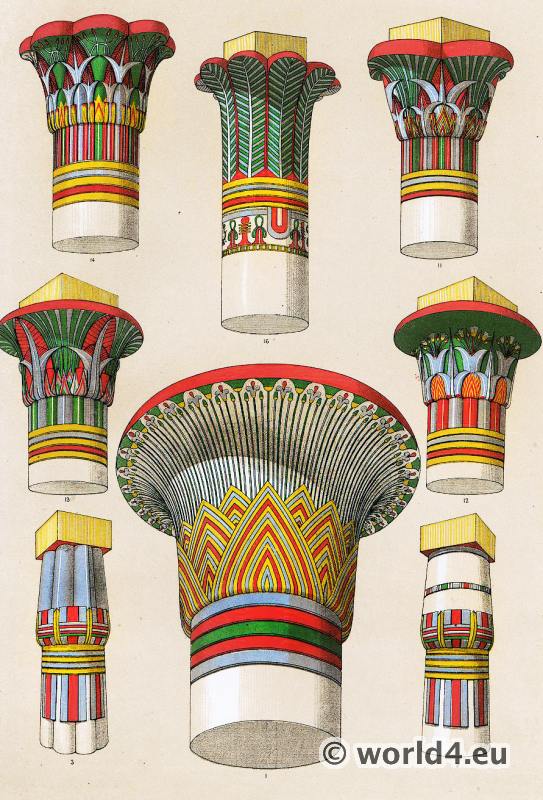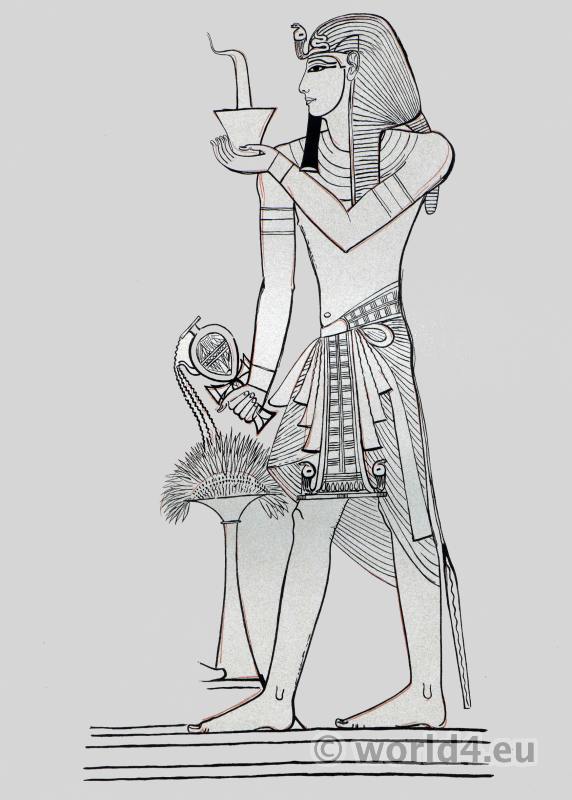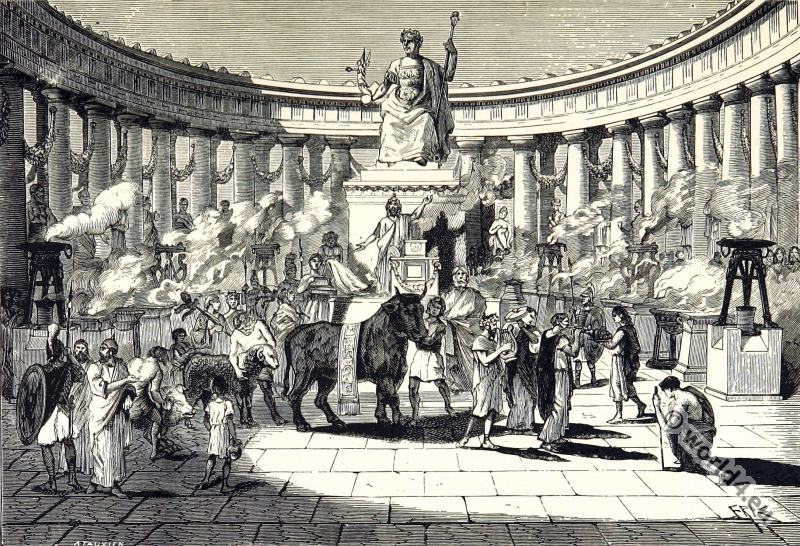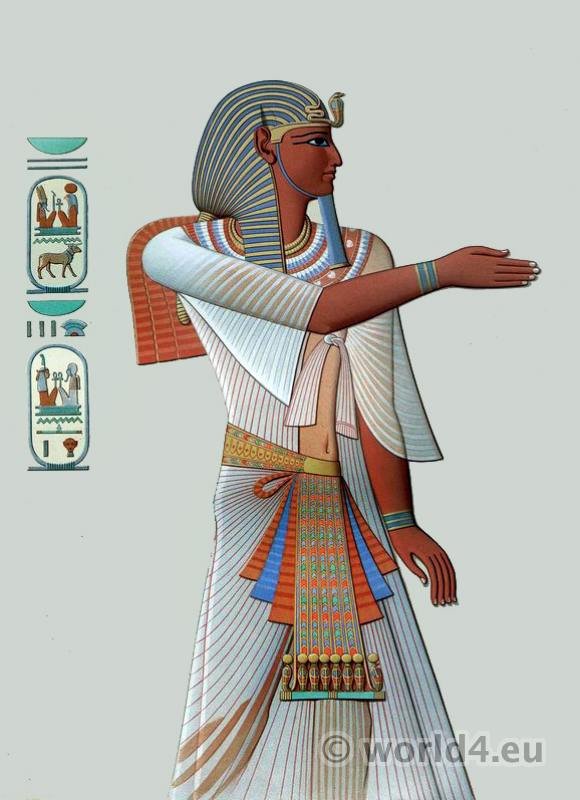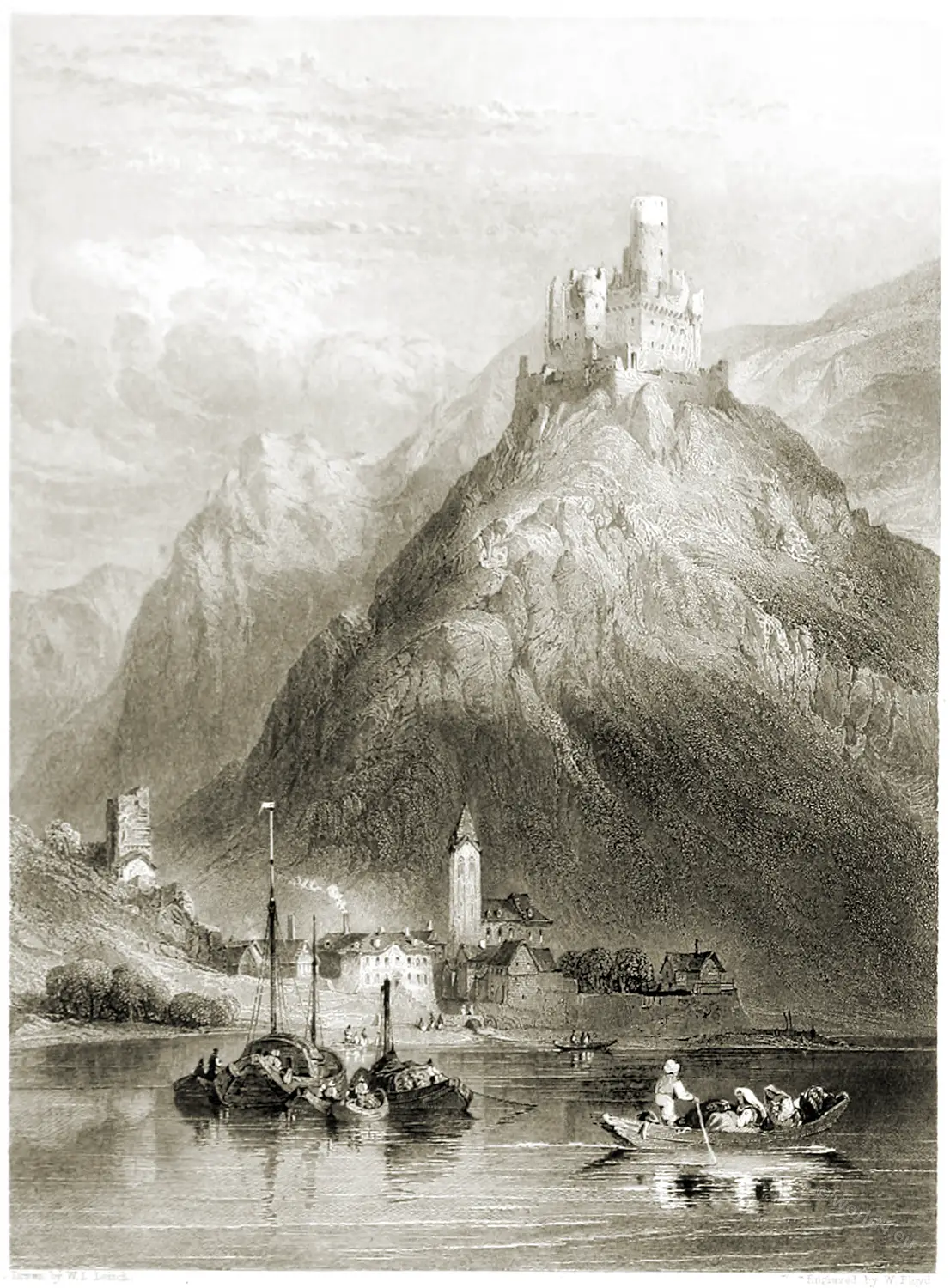
Trajan’s Kiosk, also known as Pharaoh’s Bed. The Hypaethral Temple at Philae. 1st June 1848 by David Roberts (1796 – 1864). Lithographed by Louis Haghe (1806 – 1885)
Philae (Arabic أنس الوجود, formerly also Bilaq; also Hut-chenti, House of the Beginning) is an island in the Egyptian Nile Valley flooded by the reservoir of the old Aswan Dam. It was located about eight kilometres south of the Upper Egyptian city of Aswan. Philae was known for the temple complexes (Temple of Philae) of the Isis sanctuary built there, which were moved to the neighbouring island of Agilkia due to the flooding of the island by the reservoir.
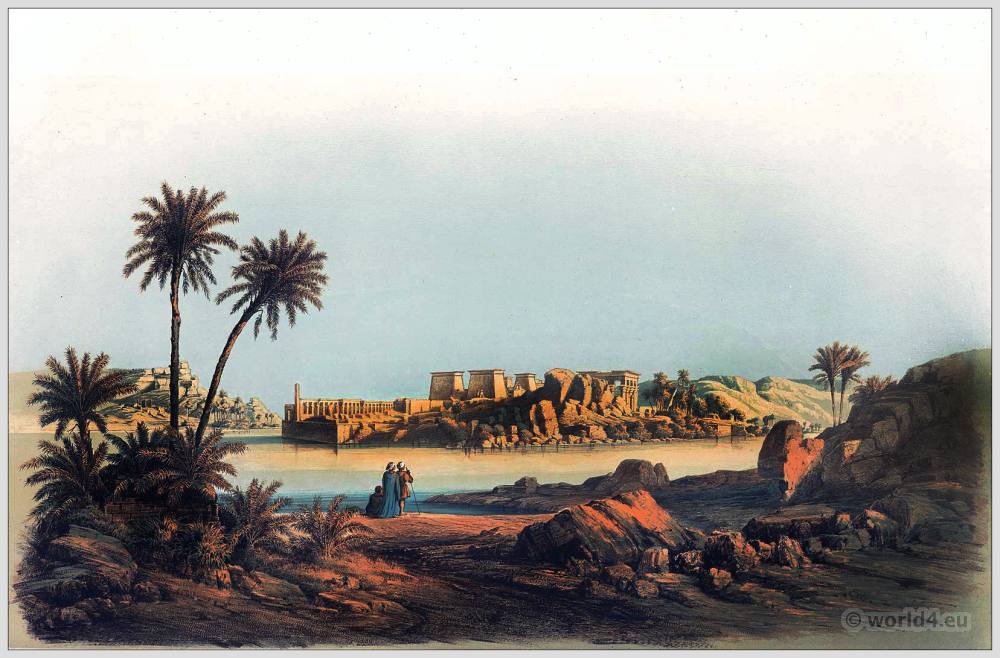
At 400 metres long and 135 metres wide, Philae was the largest of three islands at the southern end of the first cataract, a rocky barrier in the Nile characterised by rapids. The other two river islands were Agilkia, about 500 metres away on higher ground, and the small, particularly sacred island of Bigeh, where the mythological burial place of the god Osiris was located.
On Philae, situated in the corner of a small bay on the eastern bank of the Nile, stood the temple dedicated to the goddess Isis, wife of Osiris; a place of pilgrimage for the Egyptians of antiquity. From here, the priests set off in boats to Bigeh to make offerings to Osiris on 360 sacrificial tables on the island, which was otherwise forbidden to humans.
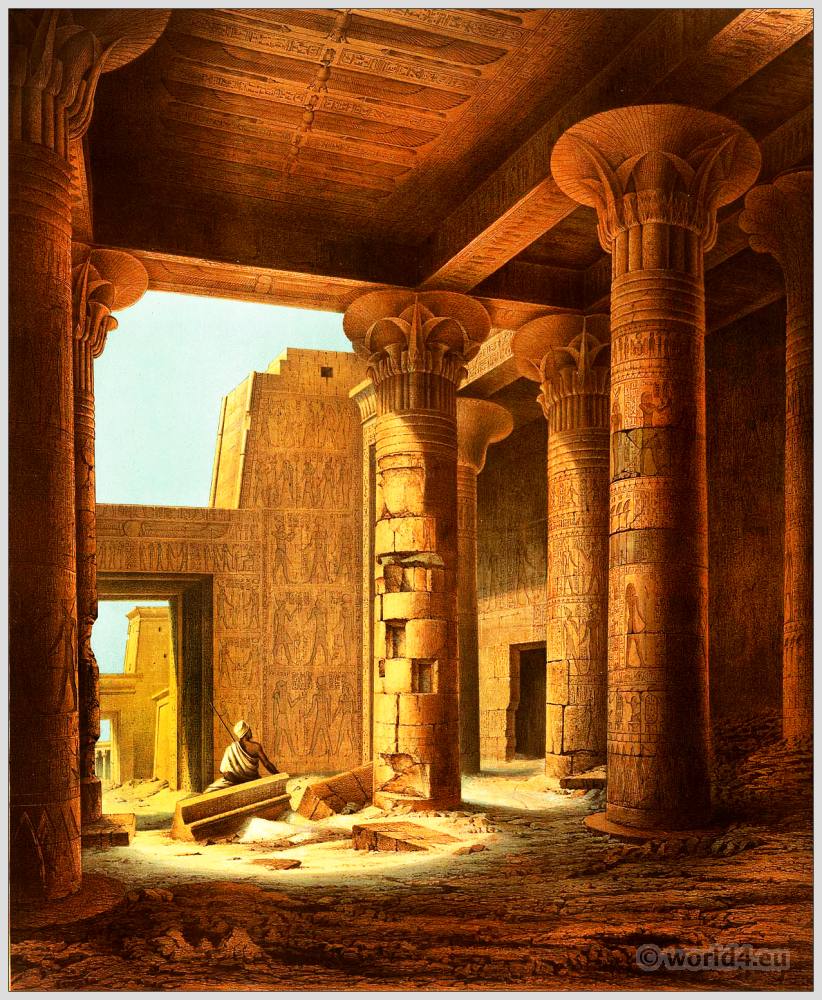
THE HYPAETHRAL TEMPLE AT PHILAE, CALLED THE BED OF PHARAOH.
This is one of the most beautiful objects on the Island of Philae, and seems to have been built for its striking and picturesque effect. It is placed on the eastern side of the island, and, in our view, appears as it is seen by the traveller who ascends the Nile. This little Temple is only sixty feet long and forty-five feet wide: the style of its proportion is elongated, as if the architect had thus intended to increase its effect as seen from the river. It has five columns on each side, and four at each end, between the centre columns at each of these is an entrance; all else around is inclosed by walls, which reach to two-thirds of the height of the columns. The architrave is raised high above the columns, being placed on upright stones, which rest upon the lotus-headed capitals; the open spaces between are out of all architectural rule or proportion, but in spite of this, it is strikingly elegant. The entrances are open to the Great Temple on the west, and to the Nile on the east; outride the river-gate is a platform, or terrace, which forms also a quay that extends nearly round the island; the principal landing-place for travelers is below this Temple, and here their boats are usually moored.
Within the Temple there is no cornice, nor any rums of structures around, which can lead to the conjecture that this beautiful little building had any connexion with the Great Temple, or with any other structure on the island. Dr. Richardson says it was probably exhibited in ancient times as the tomb of Osiris, who, the Egyptian priests maintained, was buried here: the Theban oath was to swear by Osiris, who lies buried at Philae.
In the account of her recent visit to Egypt, Miss Martineau says: — “I found my party preparing to lunch on the terrace of the Temple called Pharaoh’s Bed. This Temple was built with a view to its aspect from the river; and truly the Ptolemies and Caesars have given a fine object to voyagers who gaze up at Philae. We, who five in an English climate, can hardly reconcile our unaccustomed taste to an hypaethral building anywhere, the only building of that kind that we have at home being the village pound; and walls without roof not answering to our idea of an edifice at all. But I felt here, and at night, how strong is the temptation to abstain from roofing public buildings, where, above the canopy of the clear air, there are the circling stars to fight them. When I saw this Temple, roofed with Orion and Aldebaran, I could ask for nothing better.”
Roberts’s Journal. Dr. Richardson’s Travels. Miss Martineau’a Eastern Life.
Source: The Holy Land, Syria, Idumea, Arabia, Egypt, & Nubia, by David Roberts, George Croly, William Brockedon. London: Lithographed, printed and published by Day & Son, lithographers to the Queen. Cate Street, Lincoln’s Inn Fields, 1855.
Related
Discover more from World4 Costume Culture History
Subscribe to get the latest posts sent to your email.

